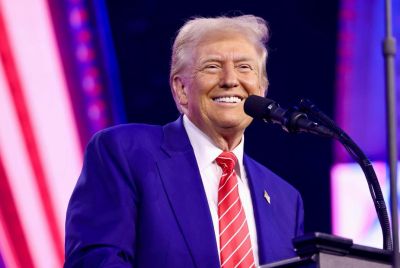Europe Next in Line After Trump Strikes Tariff Deal With Japan—What is EU's 'Trade Bazooka'?

US President Donald Trump is preparing to negotiate a tariff deal with the European Union following recent progress with Japan.
After finalising a trade agreement with Tokyo on 22 July 2025, Trump announced plans for European Union trade talks starting 23 July as the US aims to avoid imposing 30% tariffs on European imports.
However, the 1 August 2025 deadline still raises tensions and accelerates discussions. Both countries face pressure, as a failure could trigger severe tariffs, disrupting transatlantic trade.
The dialogue reflects complex behind-the-scenes moves to prevent escalation and find a compromise before the deadline.
US Strikes Positive Deal With Japan
On 22 July 2025, the US and Japan concluded a trade deal that reduced tariffs on Japanese imports, particularly autos, to 15% from the previous 25% rate. Japan also pledged a $550 billion (£407 billion) investment in the US economy, according to the BBC.
The agreement lifted restrictions on auto export volumes and improved market access for American products in Japan. This deal was seen as a breakthrough, calming markets and boosting Japanese and European stocks.
Analysts observed it could set a precedent influencing ongoing talks with other trading partners, including the EU, given Japan's success in securing a tariff reduction without export caps.
Europe is Next in Line
Following the Japan deal, attention swiftly shifted to the EU-US trade negotiations. The European Commission confirmed that ongoing technical and political consultations are aimed at finalising an agreement before 1 August 2025.
According to CNBC, EU Trade Commissioner Maroš Šefčovič is actively engaging with US counterparts, while EU leaders are holding discussions in Asia with Japanese officials and attending an EU-China summit to coordinate their positions. Although the EU's retaliatory tariffs on $21 billion of US goods remain suspended for now, preparations for broader countermeasures continue.
Market watchers expect Europe may accept a tariff baseline close to Japan's 15%, provided exemptions protect critical sectors such as automobiles, agriculture, and aerospace.
Europe's Trade Bazooka
To counter potential US tariffs, the EU has equipped itself with the Anti-Coercion Instrument (ACI), often called the 'trade bazooka.' Created in 2023, it remains unused but stands ready as a robust response to economic pressures.
The ACI enables the EU to restrict US firms' market access, block public tenders, and impose export or import controls on goods, services, and investments. It could target US digital giants and key sectors if negotiations fail to materialise.
However, the EU stresses that any use of this tool must be proportionate, targeted, and temporary, requiring approval by at least 15 member states and diplomatic engagement with the US before it can be activated. Meanwhile, several EU member states are backing a firm stance to deter tariffs, signalling a potential escalation if talks fail.
The European Commission aims to strike a balance between deterrence and negotiation, leveraging the ACI as a last resort while seeking a deal favourable to European industries. In short, Europe faces a critical juncture in trade following the US-Japan accord.
Negotiators are racing the August deadline to forge a tariff agreement, with the EU's 'trade bazooka' standing ready should diplomacy falter. The outcome will shape transatlantic trade relations for years ahead.
© Copyright IBTimes 2025. All rights reserved.




















